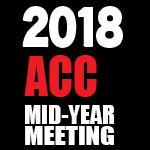A Dallas judge has rejected an attempt by Toyota to seal documents describing the automaker’s history of withholding information about its defective and dangerous products in connection with consumer lawsuits, often involving injured victims, according to a post on the website of Androvett Legal Media and Marketing.
In his March 5 ruling, state District Court Judge Dale Tillery said that it is in the public interest to keep such documents open for review because they detail issues involving public health and safety. In a separate ruling, Judge Tillery ordered Toyota to make a representative available to describe how the company manages and stores databases of hundreds of thousands of documents that may contain information about safety and design issues of Toyota products.
Attorneys from The Law Offices of Frank L. Branson obtained the records as part of a lawsuit on behalf of a Dallas family whose two children were seriously injured in 2016 when seatbacks in their Lexus ES300 failed during a rear-end collision.
“The implications of this ruling go far beyond our case,” said Branson. “Toyota has a track record of not producing information in American courts.”
The judge’s order also applies to internal correspondence from a former Toyota corporate lawyer who complained that the automaker routinely refused to comply with information requests from lawyers in product defect cases. The Androvett post says in-house lawyer Dimitrios Biller left Toyota in 2007, citing his objections to Toyota’s lack of transparency and its efforts to avoid releasing proprietary internal documents to plaintiffs in injury lawsuits. Biller’s correspondence specifically describes Toyota’s efforts to settle injury lawsuits rather than turn over a safety database known within Toyota as the “Books of Knowledge.”
The case is Reavis et al. v. Toyota Motor Sales USA et al., Cause No. DC-16-15296.
Branson, who represents the Reavis family along with Branson firm attorneys Chip Brooker and Eric Stahl, said the public deserves access to court files, particularly when the records document safety and design issues.












